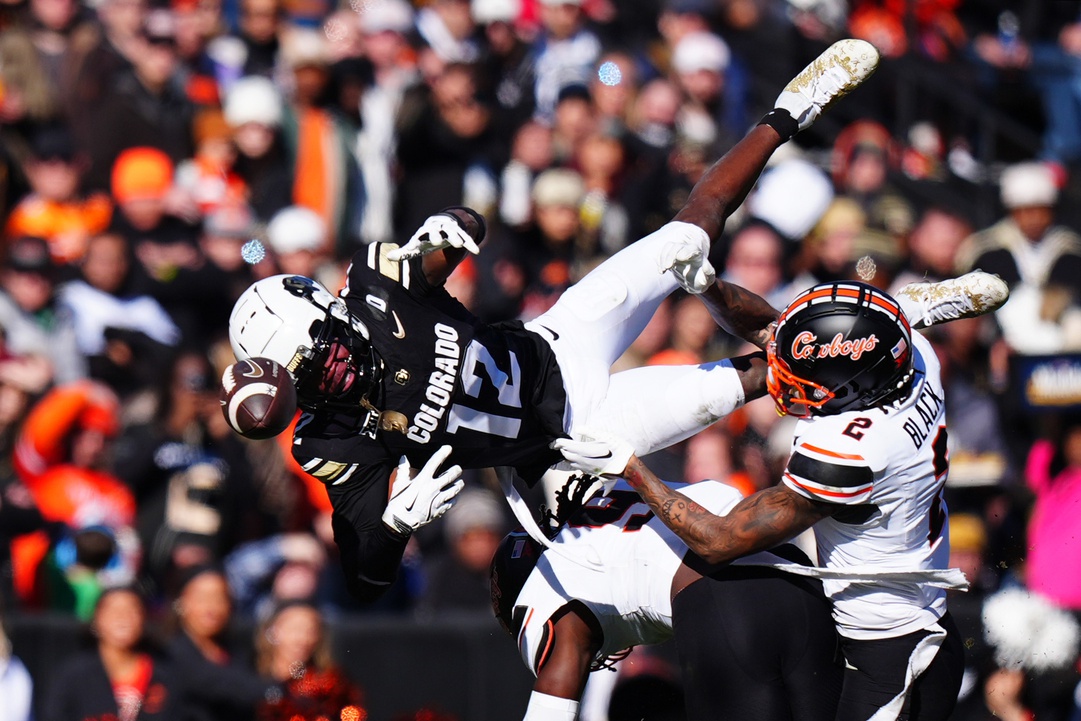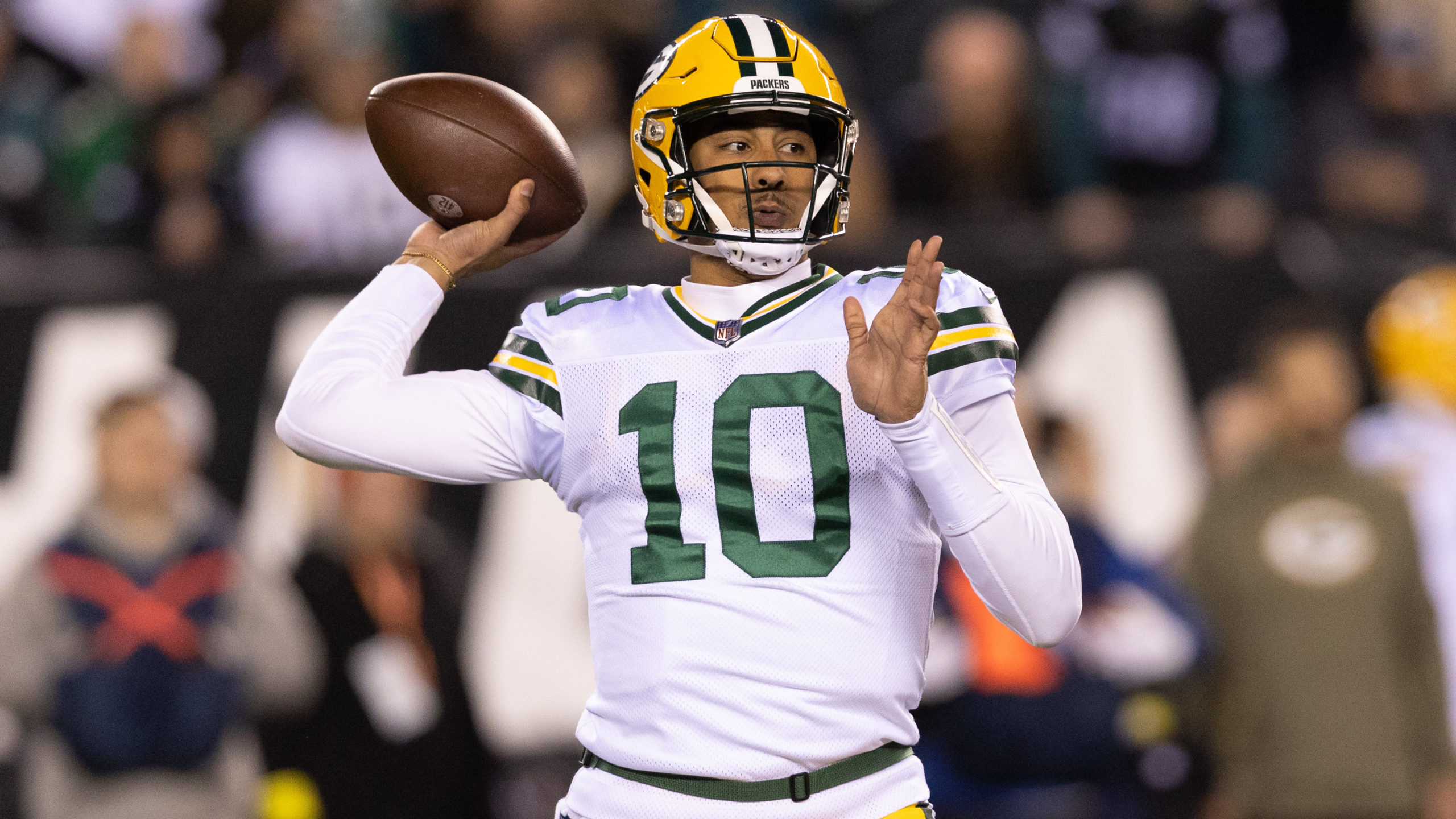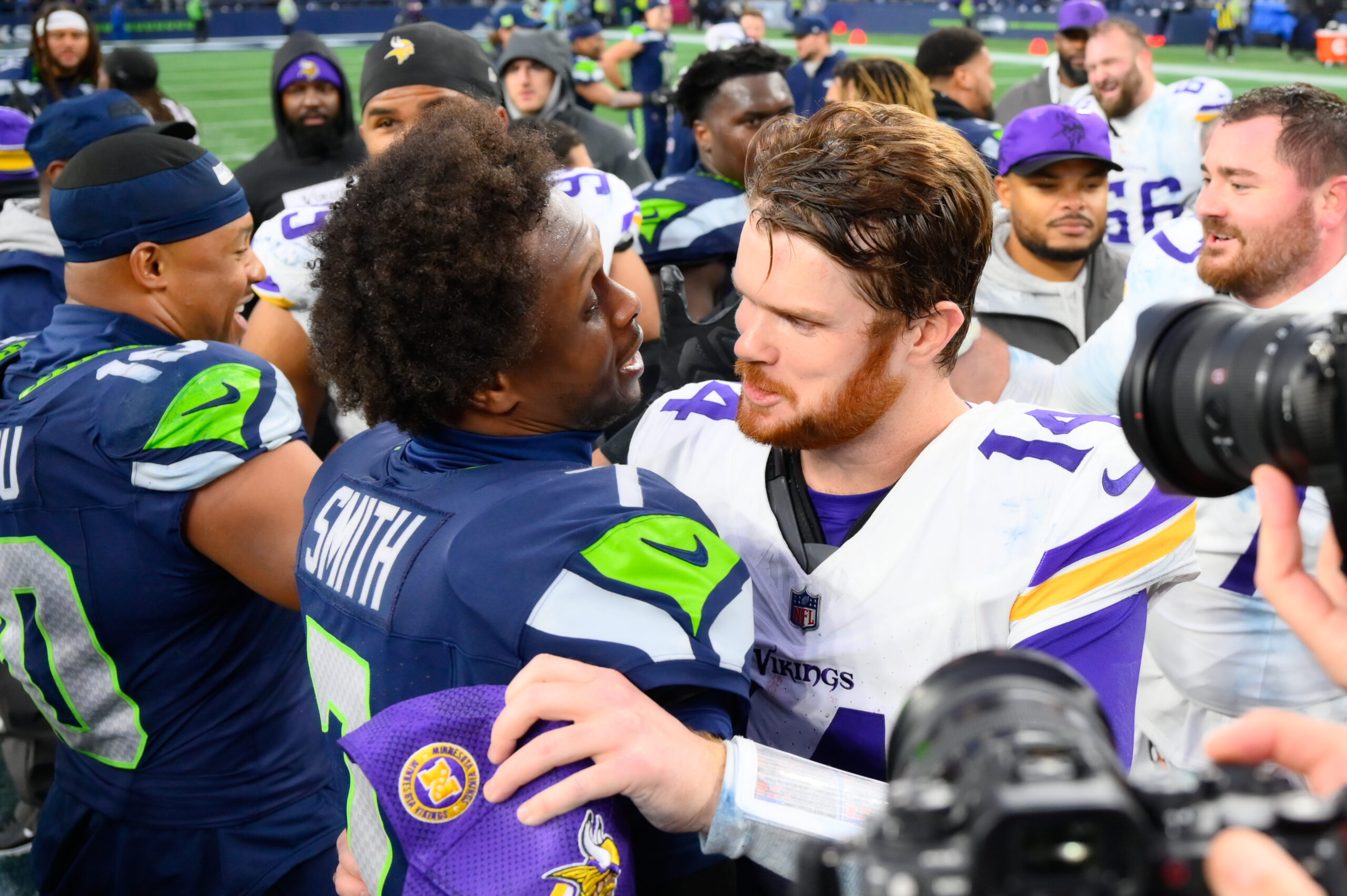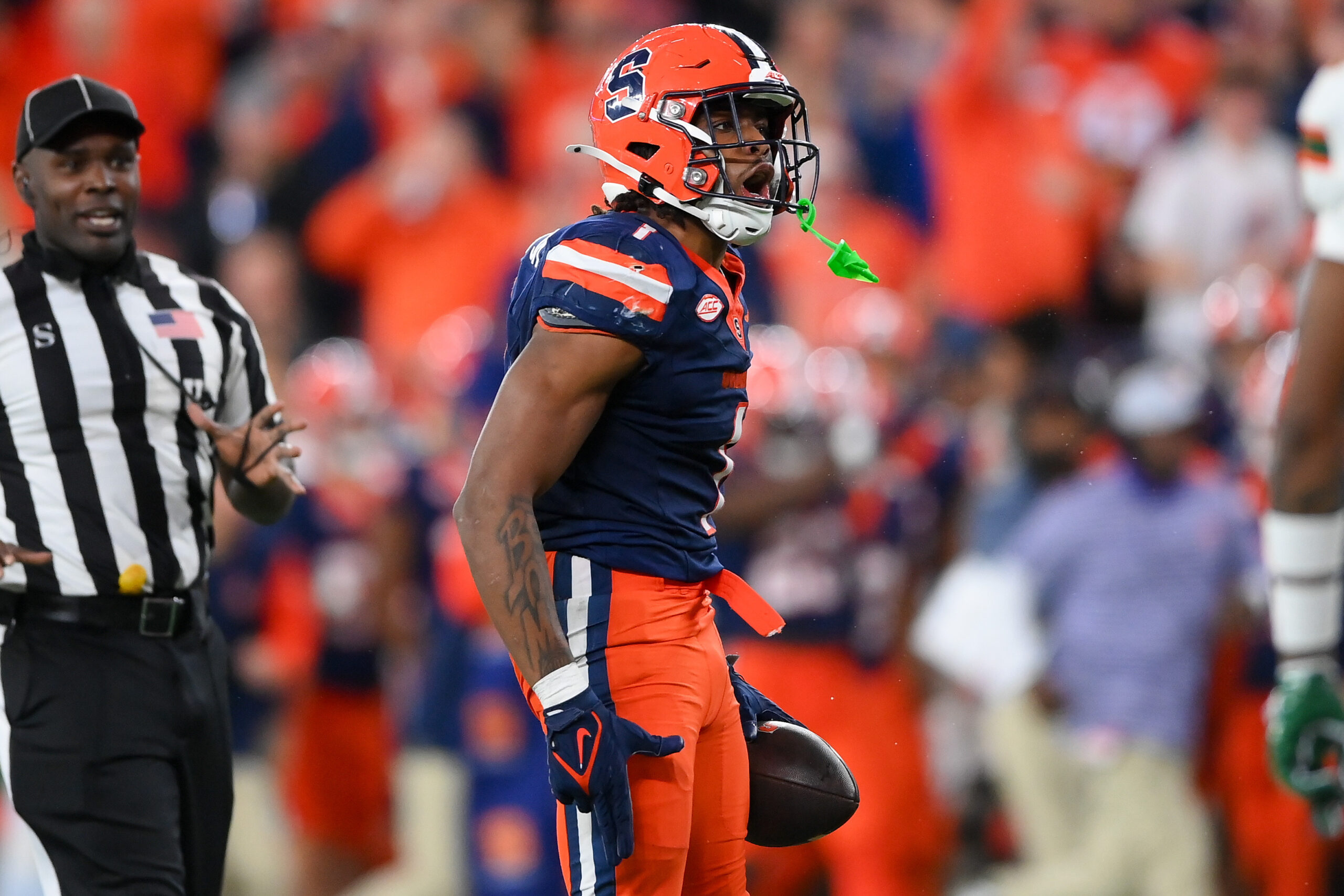NFL Analysis
7/16/24
7 min read
NFL Offenses That Could Look Most Different In 2024

With training camps opening up this week, we’ll get our first real looks at what teams could look like for the 2024 NFL season. Some teams will look completely different, either due to personnel or coaching changes.
Before camps, let’s review a few teams that might look different for those reasons and what the biggest change might be. Today, we’ll focus on the offenses, with defenses coming tomorrow.
Offenses With Most Differences
 Atlanta Falcons
Atlanta Falcons
Biggest difference: More receivers
Under Arthur Smith, the Atlanta Falcons loved to run the ball. Last season, Atlanta ranked 30th in pass rate and passed at nine percent below expectation, per rbsdm.com. The run-heavy philosophy was mostly fine when the Falcons ranked third in EPA per rush in 2022, but the 2023 team ranked 24th.
That offense was often heavy in personnel. The Falcons went last in the league in the rate of 11 personnel used at just 16.3 percent. Meanwhile, the 49ers were 31st at 38.8 percent. Atlanta relied heavily on tight ends with a league-high 41.4 percent rate of 12 personnel.
With the struggles in the running game and the heavy sets, the passing game was also sporadic and inefficient. Drake London spent most of the 2022 season getting open deep but being overthrown. The change there was to run hitches on nearly a quarter of his routes. That led to more targets and receptions, but there wasn’t much to do with them. Outside of London, the Falcons relied on Kyle Pitts and Bijan Robinson, but neither was used creatively.
The McVay-style offense that Zac Robinson comes from will have more receivers on the field, even if Darnell Mooney and Rondale Moore don’t leap out as significant contributors. Still, having more spread-out looks can open up space for the running game and allow players like London and Pitts to have more room to maneuver on routes.
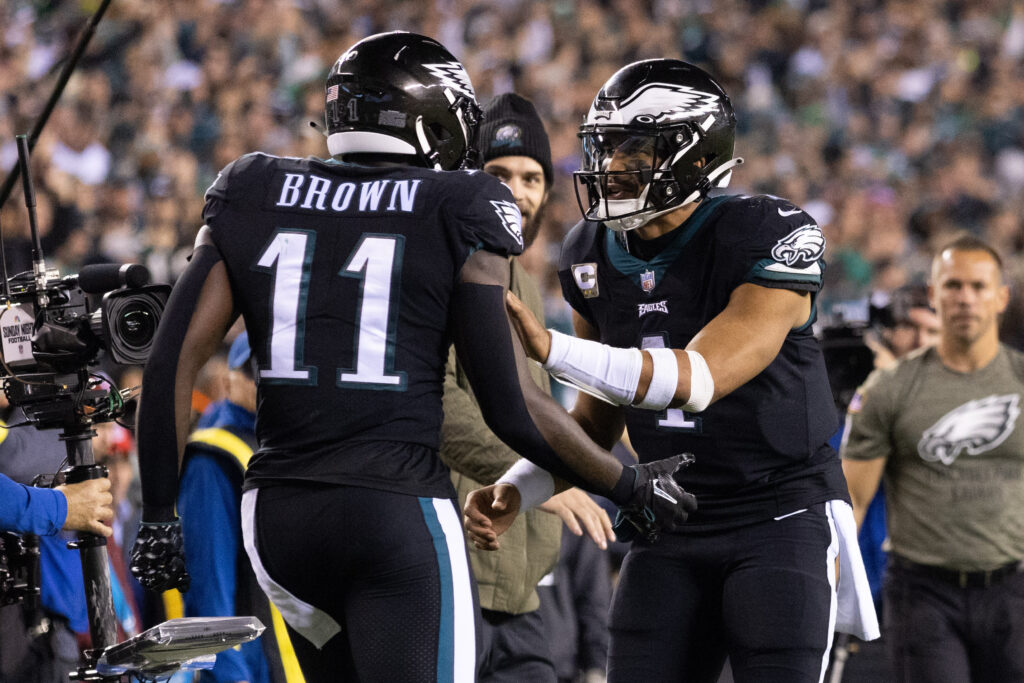
 Philadelphia Eagles
Philadelphia Eagles
Biggest difference: Movement
Jalen Hurts said the Philadelphia Eagles' offense will be 95 percent new under offensive coordinator Kellen Moore. The biggest difference might be how much movement there is before the snap. Last season, the Eagles were 32nd in the rate of motion used per FTN at 23.2 percent of plays. The Chargers were fifth at 56.2 percent.
Motion for the sake of motion doesn’t mean anything, but for the Eagles, it could create openings and allow receivers to move around the formation more often. That could be helpful for creating mismatches for A.J. Brown and DeVonta Smith. Brown lined up on the outside for 71.3 percent of his snaps, while Smith did so 74.7 percent of the time.
Moving those two around and getting more slot snaps could also help open up the middle of the field, which has been an area Hurts has struggled to consistently target throughout his career.
Some of Moore’s route combinations can be frustratingly static — tons of comebacks and hitches, which minimize yards after the catch — but that should still be an improvement on some of the pre-snap staticness of the offense and low-percentage deep routes down the sideline that have been staples of the Philadelphia passing game since Hurts took over.
 Pittsburgh Steelers
Pittsburgh Steelers
Biggest difference: Getting bigger
Some of the things that hindered the Falcons over the past few seasons under Arthur Smith could benefit the Pittsburgh Steelers as he takes over as offensive coordinator. With Russell Wilson or Justin Fields at quarterback, Pittsburgh can get the most out of heavier personnel and a running game that could become a weapon.
That will be especially true if Jaylen Warren gets more playing time. Warren had as many rushes of 10 or more yards as Najee Harris (24) on 106 fewer rush attempts. With some improvements along the offensive line, the Steelers could see fewer rushes stopped behind the line of scrimmage — they ranked 20th in stuff rate and 24th in yards before contact per rush — which should lead to more success on the ground.
A run game good enough to sustain a low-volume passing attack should benefit Wilson or Fields, whoever is the quarterback.
The Steelers could also get more out of tight ends Pat Freiermuth and Darnell Washington. Washington only saw 10 targets as a rookie, but his blocking will get him on the field in Smith's offense. More playing time will always increase the opportunity to see passes thrown his way, especially for a play-caller who loves to involve non-obvious options.

 Washington Commanders
Washington Commanders
Biggest difference: Pace
There are many questions about what Kliff Kingsbury's offense will look like with the Washington Commanders, but the one that is known is the pace.
“It’s going to be a little bit faster as far as comparing it to the offense we had last year,” RB Brian Robinson said during offseason workouts. “I just know the tempo will be faster compared to last year. We had a huddle-type offense. This offense will be more no-huddle.”
During Kinsbury’s tenure with the Cardinals, Arizona was second in situation-neutral pace. The offense's basis was getting to the line quickly and using that tempo to catch defenses off-guard.
Often that meant receivers stayed static in the same alignments and did not move around often, which limited the menu of plays that could be called.
In a best-case scenario, Washington mixes in the tempo and doesn’t rely on it to be the base of the offense with more modern motions that can change the picture for the defense while relying on a well-schemed ground game that can use the backs and quarterback Jayden Daniels.
 Seattle Seahawks
Seattle Seahawks
Biggest difference: Explosive passing
The Seattle Seahawks were fifth in explosive play rate last season and 10th in the rate of pass plays that gained 16 or more yards. Explosive plays won’t be new for Seattle, but they can become a feature under new offensive coordinator Ryan Grubb.
Grubb’s offense uses air raid passing principles, which should help create spacing with the receiver trio of DK Metcalf, Tyler Lockett, and Jaxon Smith-Njigba.
Smith-Njigba could be the biggest beneficiary, going from a role that often had him catching passes near the line of scrimmage to one that should send him down the field more often. His average target depth was just 6.12 yards as a rookie, while he tied Metcalf on EPA/route and touchdowns on targets of 11 or more air yards. Smith-Njigba also averaged 2.43 yards per route run when lined up wide but only did so on 32 percent of his snaps.
Grubb’s offense uses a ton of motion to get receivers in advantageous matchups. It’s also an offense that puts control in the quarterback’s hands, something Geno Smith has already liked this offseason.
“I feel like I'm a dropback passer, and I feel like this is a drop-back offense, an offense that's going to spread the ball around, trust the quarterbacks to make the right decisions,” Smith told the team website in May. “That's pre- and post-snap. I think that's something that I'm really good at.”
With an offensive line coaching background, Grubb can also get more out of a line that struggled in pass protection through injuries, which will give the offense more time to push the ball down the field.


